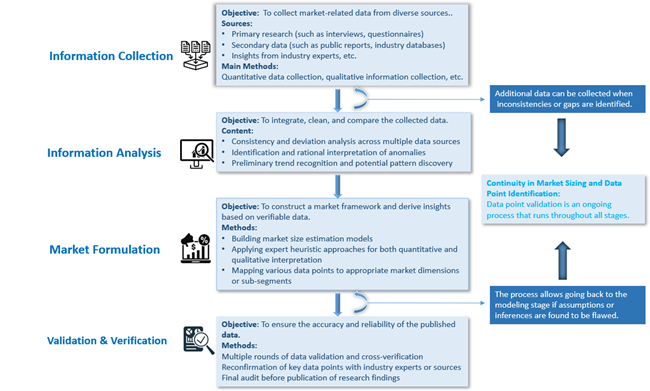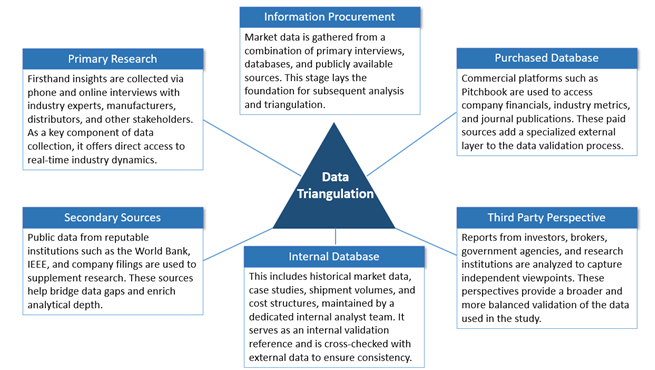A driverless forklift is an intelligent
industrial robotic vehicle that operates without human intervention. By
integrating various navigation technologies, mapping algorithms, and obstacle
avoidance safety systems into traditional forklifts, these machines achieve
fully autonomous operation. Driverless forklifts can automatically plan routes
and execute material handling and stacking tasks based on pre-set programs and
instructions, without requiring manual driving.
As one of the most popular categories in the mobile
robotics industry, driverless forklifts are experiencing rapid global growth.
According to LookWhole Insight, global sales of driverless forklifts increased
from 5,700 units in 2019 to 30,700 units in 2023, registering a compound annual
growth rate (CAGR) of 52.34%, indicating a booming market. China has emerged as
the leading global market, with its share steadily increasing year by
year—reaching over 60% of global sales by 2023. In 2024, sales in China reached
24,500 units, a year-on-year increase of 25.64%. Although driverless forklifts
currently account for less than 2% of total forklift sales, with technological
advancements and expanding market demand, the potential for intelligent
development is substantial.
According to LookWhole Insight, the global Driverless Forklifts market is projected to reach USD 2.43 Billion in 2024. It is expected to grow to USD 5.67 Billion by 2033, registering a compound annual growth rate (CAGR) of 9.85% during the forecast period (2025–2033).
Industry Chain and Key Technology Analysis
The components of a driverless forklift include
positioning and navigation devices, vehicle body, onboard control system, power
supply, drive system, communication devices, and other parts such as safety
protection systems and actuators. From a cost structure perspective,
positioning and navigation systems constitute the largest share—about 25% of
total costs. The vehicle body, serving as the core hardware (including the
frame and mechanical components), provides the foundational structure and
mounting platform for other components and accounts for approximately 20% of
the cost. Overall, the major production costs are concentrated in software and
intelligent control systems, which differentiate driverless forklifts from
traditional models.
Positioning and navigation functionality is a key
advantage of driverless forklifts over traditional forklifts. These systems use
a variety of sensors to monitor the working environment in real time, providing
location data and environmental parameters to ensure safe, efficient, and
precise operation. Currently, Laser SLAM (Simultaneous Localization and
Mapping) is the primary sensing technology used for navigation, obstacle
avoidance, and terminal recognition. By identifying cargo locations and
obstacles, SLAM enables optimal route planning and ensures the forklift reaches
its destination accurately.
Traditional Forklift Market Analysis
With the continuous increase in labor costs and the policy side continuing to increase the smart logistics infrastructure, the global smart logistics industry has entered a stage of large-scale expansion, but the efficiency bottleneck of traditional logistics equipment has become a shortcoming that restricts the upgrading of the industry.
Looking at the overall supply and demand of forklifts around the world, the supply and demand relationship in the global forklift market remains balanced overall. However, with the continuous growth of market demand, especially the rapid expansion in Asia, the supply and demand relationship of forklifts may be tense in certain periods and regions. From the data, it can be seen that global sales have exceeded orders since 2023. Mainly because forklift manufacturers are constantly expanding production capacity and increasing production in order to meet market demand. The competitive landscape of global forklift suppliers is characterized by diversification and dynamic changes. In 2024, according to the US MMH magazine, internationally renowned brands such as Toyota and Kion continued to occupy a leading position in the market. These companies have maintained strong market competitiveness with their deep technical accumulation, strong brand influence and extensive global sales network.
Global TOP20 Forklift Suppliers
|
Company Name |
2023 Rank |
2023 Revenue |
2022 Rank |
2022 Revenue |
YoY Change |
|
ToyotaIndustries Corporation |
1 |
16,322 |
1 |
16,858 |
-3.20% |
|
KION Group |
2 |
9,359 |
2 |
7,853 |
19.20% |
|
Jungheinrich AG |
3 |
6,128 |
3 |
5,263 |
16.40% |
|
Crown Equipment Corporation |
4 |
5,180 |
4 |
4,690 |
10.40% |
|
Mitsubishi Logisnext Co., Ltd. |
5 |
4,637 |
5 |
4,630 |
0.20% |
|
Hyster-Yale Materials Handling |
6 |
4,118 |
6 |
3,548 |
16.10% |
|
Anhui Forklift Group (HELI) |
7 |
2,451 |
7 |
2,258 |
8.50% |
|
Hangcha Group |
8 |
2,297 |
8 |
2,069 |
11.00% |
|
Doosan Bobcat |
9 |
2,002 |
9 |
1,688 |
18.60% |
|
CLARK Material Handling |
10 |
1,000 |
10 |
908 |
10.10% |
|
Hyundai Material Handling |
11 |
885 |
15 |
457 |
93.70% |
|
EP Equipment (Zhongli Co., Ltd.) |
12 |
831 |
11 |
720 |
15.40% |
|
Komatsu Ltd. |
13 |
605 |
12 |
605 |
0.00% |
|
Lonking Forklift Co., Ltd. |
14 |
516 |
13 |
487 |
6.00% |
|
Combilift Ltd. (Ireland) |
15 |
510 |
16 |
420 |
21.40% |
|
Guangxi LiuGong Machinery Co., Ltd. |
16 |
487 |
14 |
465 |
4.70% |
|
Noblelift Intelligent Equipment |
17 |
420 |
17 |
309 |
36.10% |
|
Manitou Group |
18 |
233 |
18 |
228 |
2.20% |
|
HUBTEX Maschinenbau GmbH |
19 |
115 |
NA |
101 |
13.90% |
|
Godrej Group |
20 |
101 |
19 |
91 |
11.10% |
|
Total |
|
58,197 |
|
53,647 |
8.50% |
Report Framework and Key Highlights:
Market Dynamics: Identification of major market drivers, restraints, opportunities, and challenges.
Trend Analysis: Examination of ongoing and emerging trends impacting the market.
Competitive Landscape: Detailed profiles and market positioning of major players, including market share, operational status, product offerings, and strategic developments.
Strategic Analysis Tools: SWOT Analysis, Porter’s Five Forces Analysis, PEST Analysis, Value Chain Analysis
Market Segmentation: By type, application, region, and end-user industry.
Forecasting and Growth Projections: In-depth revenue forecasts and CAGR analysis through 2033.
This report equips readers with critical insights to navigate competitive dynamics and develop effective strategies. Whether assessing a new market entry or refining existing strategies, the report serves as a valuable tool for:
Industry players
Investors
Researchers
Consultants
Business strategists
And all stakeholders with an interest or investment in the Driverless Forklifts market.
Global Driverless Forklifts Market: Segmentation Analysis and Strategic Insights
This section of the report provides an in-depth segmentation analysis of the global Driverless Forklifts market. The market is segmented based on region (country), manufacturer, product type, and application. Segmentation enables a more precise understanding of market dynamics and facilitates targeted strategies across product development, marketing, and sales.
By breaking the market into meaningful subsets, stakeholders can better tailor their offerings to the specific needs of each segment—enhancing competitiveness and improving return on investment.
Global Driverless Forklifts Market: Market Segmentation Analysis
The research report includes specific segments by region (country), manufacturers, Type, and Application. Market segmentation creates subsets of a market based on product type, end-user or application, Geographic, and other factors. By understanding the market segments, the decision-maker can leverage this targeting in the product, sales, and marketing strategies. Market segments can power your product development cycles by informing how you create product offerings for different segments.
Key Companies Profiled
Toyota Industries Corporation
KION Group
Jungheinrich AG
Hyster-Yale Group, Inc.
Hangcha Group Co., Ltd.
Anhui Heli Co., Ltd.
Geekplus Technology Co., Ltd.
Standard Robots
VisionNav Robotics
Vecna Robotics
Fox Robotics
AGILOX
Multiway Robotics Co., Ltd.
Siasun Robot & Automation Co., Ltd.
Hikrobot (Hangzhou Hikrobot Co., Ltd.)
Noblelift Intelligent Equipment Co., Ltd.
AGVE
JBT
EK Robotics
Balyo
Guozi Robotics
GuoChen Robot Technology Co., Ltd.
AiTEN Intelligent Technology
Hefei Jingsong Intelligent Technology Co., Ltd.
Lianhe Tech
Leishen Intelligence
MABO E&A
Market Segmentation by Type
Pallet Forklifts
Stacker Forklifts
Counterbalanced Forklifts
Reach Trucks
Others
Market Segmentation by Application
Lithium Batteries
Photovoltaics
Automotive and Auto Parts
General Electronics Industry
General Manufacturing / Textiles
Supply Chain / Third-Party Logistics
Construction Machinery / Heavy Industry
Energy and Chemicals
Others
Geographic Segmentation
North America: United States, Canada, Mexico
Europe: Germany, France, Italy, U.K., Spain, Sweden, Denmark, Netherlands, Switzerland, Belgium, Russia.
Asia-Pacific: China, Japan, South Korea, India, Australia, Indonesia, Malaysia, Philippines, Singapore, Thailand
South America: Brazil, Argentina, Colombia.
Middle East and Africa (MEA): Saudi Arabia, United Arab Emirates, Egypt, Nigeria, South Africa, Rest of MEA
Report Framework and Chapter Summary
Chapter 1: Report Scope and Market Definition
This chapter outlines the statistical boundaries and scope of the report. It defines the segmentation standards used throughout the study, including criteria for dividing the market by region, product type, application, and other relevant dimensions. It establishes the foundational definitions and classifications that guide the rest of the analysis.
Chapter 2: Executive Summary
This chapter presents a concise summary of the market’s current status and future outlook across different segments—by geography, product type, and application. It includes key metrics such as market size, growth trends, and development potential for each segment. The chapter offers a high-level overview of the Driverless Forklifts Market, highlighting its evolution over the short, medium, and long term.
Chapter 3: Market Dynamics and Policy Environment
This chapter explores the latest developments in the market, identifying key growth drivers, restraints, challenges, and risks faced by industry participants. It also includes an analysis of the policy and regulatory landscape affecting the market, providing insight into how external factors may shape future performance.
Chapter 4: Competitive Landscape
This chapter provides a detailed assessment of the market's competitive environment. It covers market share, production capacity, output, pricing trends, and strategic developments such as mergers, acquisitions, and expansion plans of leading players. This analysis offers a comprehensive view of the positioning and performance of top competitors.
Chapters 5–10: Regional Market Analysis
These chapters offer in-depth, quantitative evaluations of market size and growth potential across major regions and countries. Each chapter assesses regional consumption patterns, market dynamics, development prospects, and available capacity. The analysis helps readers understand geographical differences and opportunities in global markets.
Chapter 11: Market Segmentation by Product Type
This chapter examines the market based on product type, analyzing the size, growth trends, and potential of each segment. It helps stakeholders identify underexplored or high-potential product categories—often referred to as “blue ocean” opportunities.
Chapter 12: Market Segmentation by Application
This chapter analyzes the market based on application fields, providing insights into the scale and future development of each application segment. It supports readers in identifying high-growth areas across downstream markets.
Chapter 13: Company Profiles
This chapter presents comprehensive profiles of leading companies operating in the market. For each company, it details sales revenue, volume, pricing, gross profit margin, market share, product offerings, and recent strategic developments. This section offers valuable insight into corporate performance and strategy.
Chapter 14: Industry Chain and Value Chain Analysis
This chapter explores the full industry chain, from upstream raw material suppliers to downstream application sectors. It includes a value chain analysis that highlights the interconnections and dependencies across various parts of the ecosystem.
Chapter 15: Key Findings and Conclusions
The final chapter summarizes the main takeaways from the report, presenting the core conclusions, strategic recommendations, and implications for stakeholders. It encapsulates the insights drawn from all previous chapters.






